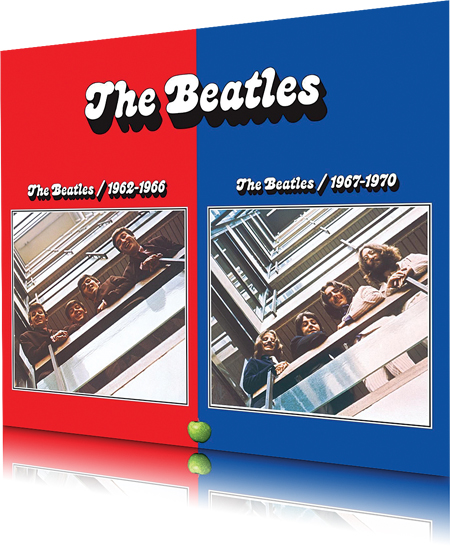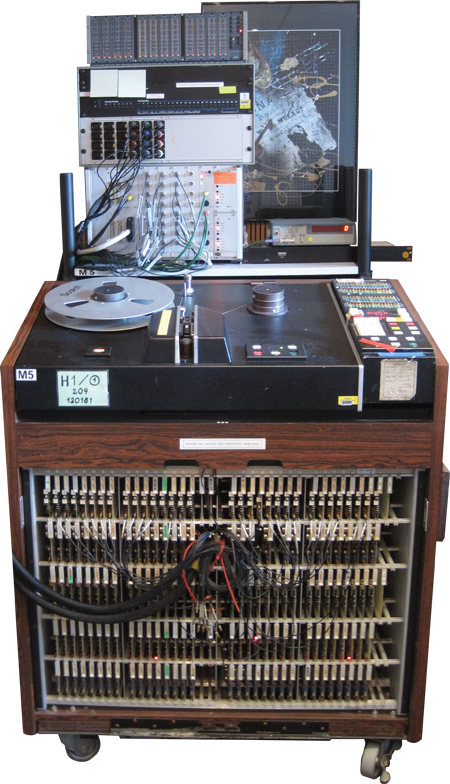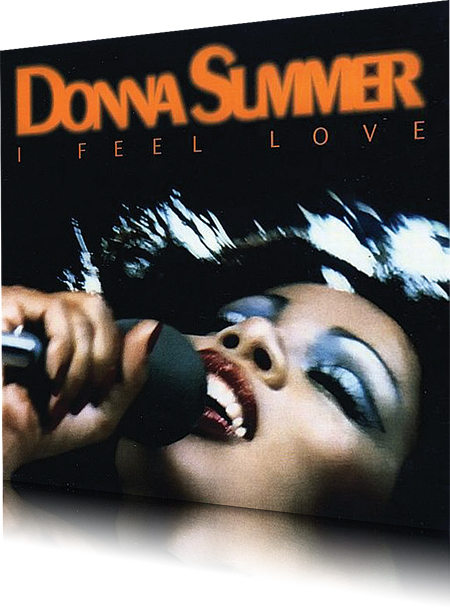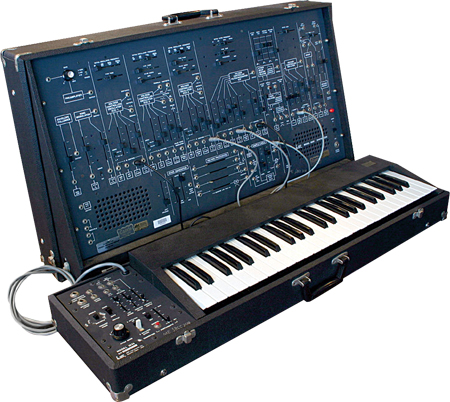Defining Sounds: A 50 Year Retrospective
Over the last 50 years, the sound of popular music has changed along with the technology that is used to produce it. In this feature we’ll be taking a look, decade by decade, at the way recording technique and technology has progressed to create the defining sounds of the era. From those early analogue mono […]


Over the last 50 years, the sound of popular music has changed along with the technology that is used to produce it. In this feature we’ll be taking a look, decade by decade, at the way recording technique and technology has progressed to create the defining sounds of the era.
From those early analogue mono recordings produced by an army of engineering staff in vast studios to the complex, multi-layered tracks created by an individual in a digital ‘studio’ that can be carried around in a rucksack, we’ll explain how classic sounds were created and show you how to replicate them using today’s technology.
Although many of us work ‘in-the-box’, an understanding of how recording techniques originated can be enlightening and enhance the enjoyment of music production. Effects that once necessitated the use of large spaces to create ambience, or expensive equipment to shape and distort audio, can now be achieved at the click of a mouse. And classic outboard gear is now available in software form – even the sound of analogue tape can be simulated in the digital domain.
The rapid development of multitrack recording capability throughout the 1960s and 1970s had a huge impact on the way music sounded and gave rise to numerous recording techniques and effects, while the advancement of digital technology from the 1980s onwards has inspired whole new genres of popular music, as well as enabling the DAW culture we have today. And although developments in recording equipment and technique have had a profound effect on the evolution of music production, advances in the musical instruments themselves – particularly synthesizers – has also gone a long way to define the sound of the last five decades, from the progressive rock of the 60s and 70s, synth-pop and dance culture of the 80s and 90s, right up to modern-day electronica.
Attitudes as well as approaches to recording have similarly changed considerably over the years and, thankfully for us, the art of recording is no longer the preserve of an elite few. However you make your music, we hope you can take inspiration from a golden age in popular music production.
The 60’s
Pop music – and the way in which it was recorded – changed beyond recognition from the beginning to the end of the 1960s. Multitrack recording, developed by Les Paul in the 1950s, was still in its infancy at the start of the decade, with most recordings captured live on to 2-, 3- or 4-track machines. With such a limited number of tracks available, almost all of the sound balancing had to be done at the recording stage, and final mixing was merely a case of blending a pre-mixed backing track with a lead vocal. Close-mic’ing techniques were uncommon at this time, as engineers attempted to capture a balance of the musicians playing in the studio with a minimum of microphones. Most recordings were made in studios owned by record companies, which had strict guidelines regarding standard recording procedure. As independent producers such as Phil Spector and Joe Meek began making their mark by developing their own unique styles, the recording establishment was forced to rethink its attitude towards experimentation.
All recording in the 1960s was analogue and, for most of the decade, valve-based. The sound of valve equipment being driven into smooth and musical distortion is a defining element of early 60s pop, from Motown and Atlantic in the USA to the beat-group sound emerging from these shores. The sound of the tape beginning to saturate as engineers strove to get maximum signal-to-noise ratio also gave these records a good deal of their sonic character. Although stereo recording had been around for years, pop singles were produced in mono, designed to be heard on jukeboxes, Dansette record players and cheap transistor radios.

Engineer Geoff Emerick used an AKG D19C as an overhead for capturing Ringo Starr’s drum sound.
Beyond Four-Track
There can be no doubt that the single biggest influence on the progress of record production in the 1960s was The Beatles. As the decade progressed, they seemingly broke new ground with each release, pushing the technical and recording engineers at EMI’s Abbey Road Studios to develop new techniques in order to stay ahead of the game.
Their first recordings from 1962 up to late 1963 were recorded on twin-track, but the arrival of 4-track machines opened up new opportunities for invention. By 1965, producer George Martin was using a pair of Studer J37s to increase the track count further by making reduction mixes; once the four tracks on the first J37 were full, they could be mixed, sent through a compressor and bounced to one or more tracks on the second machine. This technique was employed to great effect on albums such as Revolver (1966) and Sgt. Pepper’s Lonely Hearts Club Band (1967).
Tape machines played a large part in creating effects as well. Tape-echo was a key feature of many early rock ‘n’ roll records, producing a slap-back effect, and would often be used to provide a reverb pre-delay when sent to an echo (reverb) chamber or a plate reverb such as the EMT 140 (see Studio Icons, Issue 97, April 2011).
A tape-based effect that has become synonymous with the psychedelic era of the mid/late 60s is phasing, achieved by playing two copies of the same recording very slightly out of sync, between around one and five milliseconds. This alone produces a comb-filter effect, but if the speed of one of the tape machines is constantly altered, a swirling, ‘flanged’ sound is heard. The Small Faces’ 1967 hit Itchycoo Park is a fine example of phasing – or ‘skying’, as it was referred to at the time. Using the same vari-speed method but with a delay time of between 30 and 50 milliseconds, a chorus effect is produced; this effect was used for the backing vocals on The Beatles’ Lucy In The Sky With Diamonds.

To hear the development of technology reflected in the music it was used to record, grab everything by The Beatles
Enter Stereo
The sonic experimentation inspired by psychedelia generated an interest in stereo recording techniques. Unlike classical stereo recording, which aimed to give a realistic impression of the stereo spread of an orchestra, early stereo pop records often featured extreme panning techniques, such as placing the drums in the left channel with the drum reverb panned hard right. By 1968, most professional studios had 8-track recorders, which offered far greater flexibility for overdubbing and stereo mixing. Jimi Hendrix’s Electric Ladyland album, released that year, was one of the first rock LPs to be recorded specifically for stereo reproduction, with the final mix employing lots of movement within the stereo soundfield. Around the same time, studios began to embrace solid-state technology, with units such as the FET-based Urei 1176 compressor/limiter superseding classic Fairchild and Altec units, many of which were sadly junked.
EMI installed its first transistorised mixing console, the TG12345, in Abbey Road the end of 1968 (see Studio Icons, Issue 101, August 2011). It had a smooth and slightly clinical sound that was far removed from the warm, rounded sound of the valve Redd 51 desk it replaced. Compare the sound of The Beatles’ Abbey Road – the band’s sole solid-state recording – to their earlier work and the difference is enormous. Then compare that same album to classic 1970s productions – such as Pink Floyd’s Dark Side Of The Moon – and you will hear that by the final year of the 1960s, the super-clean 70s studio sound had arrived.
The 70’s
The technical innovations in studio technology of the 1960s, particularly the multitrack recording capability and technique, continued to progress rapidly during the 70s. The 8-track recorders that first appeared in British studios in the final couple of years of the 60s reduced the need for engineers to create extra tracks by bouncing between two 4-track machines. This made overdubbing more convenient and reduced the build-up of tape hiss, but it didn’t greatly alter the way that initial backing tracks were committed to tape. The arrival of 16-track at the dawn of the 70s created a sea-change in the way that multitrack recording could be done, enabling track-laying methods that have become standard practice in professional studios ever since.
Whereas 4- and 8-track had necessitated a certain amount of pre-mixing to tape, 16-track allowed engineers to assign each mic channel to its own track, making the recording and mixing processes two separate entities. This meant that final mixing decisions, such as the balance of the drums, for example, could be put off until recording was complete. While this gave unprecedented flexibility, it also created a situation in which some novice engineers would record substandard sounds with badly placed mics, in the misguided belief that they would be able to ‘fix it in the mix’.
However, good engineers used these advances to their advantage, producing crystal-clear recordings with excellent stereo imaging and extended frequency response that was a world apart from the midrange-dominant mono recordings of the 60s. By the middle of the 70s, 24-track machines became the new state-of-the-art and, as far as analogue tape recording goes, has remained so. That said, many engineers believe that despite the increased track count, 16-track actually sounds better. This isn’t altogether surprising as both formats utilise 2-inch tape, and it doesn’t take a genius to realise that one track of audio that is recorded onto one-sixteenth of the available tape width will be sonically superior to one that’s recorded onto one-twenty-fourth.

In the 70’s automated multitracking started to become more prevelant. The first digitally recorded rock album was Ry Cooder’s ‘Bop Till You Drop’ recorded using 3M digital recorder. Picture: Arvato Entertainment Europe
Count Down
Not only were track counts increasing during the 70s, the number of recording studios themselves was escalating. Gone were the days when artists were obliged to record in the studios owned by the record companies to which they were signed, and while some opted to record at independent studios in London – Trident, for example – others preferred to get it together in the country, at rural studios such as Rockfield, in Monmouthshire. A third option that emerged during this period was to hire a mobile rig and decamp to a stately home, making use of the acoustic properties of the many rooms available. Led Zeppelin used The Rolling Stones Mobile Studio to record tracks at Headley Grange, a Victorian mansion in East Hampshire, while the Stones used their own rig to record many of the tracks on their classic Exile On Main St album at Mick Jagger’s English country house and Keith Richards’ villa in France.
A recording style that became popular as the 70s progressed was to lay down a basic backing of bass and drums – or even just the drum kit played to a click-track – and overdub the remaining instruments one by one to achieve maximum separation. While this method allows for a very clean recording with no spillage from other sound sources, the natural vibe of the whole band playing together is sacrificed. This track-by-track layering was used to great effect by multi-instrumentalist Mike Oldfield for his ground-breaking 1973 album Tubular Bells, which launched Virgin Records.
One drawback of serial overdubbing is that the constant replaying wears the tape, losing fidelity and causing drop-outs. Pink Floyd overcame this problem during the recording of 1979’s The Wall by recording the initial backing tracks to 16-track, then copying the results to 24-track for subsequent overdubbing. The machines were sync’ed so that the overdubs could be used alongside the backing on the unworn and sonically superior 16-track.

‘I Feel Love’ reached number one in the UK singles chart and number six on the Billboard Top 100 in the US
Route Master
The huge mixing desks that were designed to be used with the multitrack recorders of the 1970s usually featured comprehensive parametric EQ on each channel, enabling much finer tone-sculpting than was possible during the 60s. Routing facilities on these consoles were also greatly improved, allowing outboard gear to be sent to any combination of individual channels or sub-groups. The higher number of desk channels also gave rise to new dynamic techniques, such as parallel compression, pioneered by engineers in New York. This involves splitting the audio signal so that one version of the signal can be heavily compressed, and used simultaneously with the unprocessed original signal.

The use of synths became more popular during the 1970s. The 2600 was ARP’s answer to the modular system.
Image courtesy of WayOutWareInc